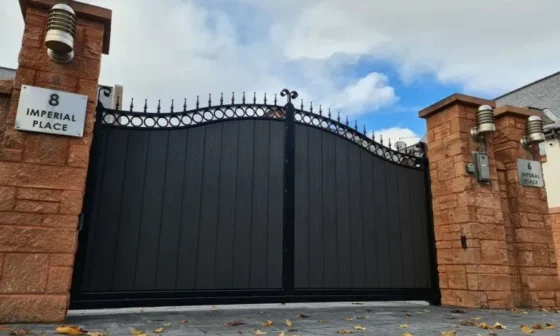
We’ve all experienced that frustrating moment when a door lock decides to play hard to get. Whether it’s due to wear and tear or a sudden malfunction, a jammed door lock from the inside can throw a wrench into our daily routines.
In this guide, we’ll explore practical tips for handling these sticky situations, ensuring you can navigate through locked doors without a hassle.
Common Causes of a Door Lock Jamming from the Inside
A door lock jamming from the inside can be caused by various factors. Here are some common reasons why a door lock might become jammed:
- Misalignment of the Door
- If the door is misaligned with the door frame, it can put extra stress on the lock mechanism, causing it to jam. This misalignment might occur due to changes in temperature, settling of the building, or improper installation.
- Worn or Faulty Lock Components
- Over time, the internal components of a lock can wear out, leading to malfunction. This can include worn-out pins, springs, or other internal parts. Additionally, if the lock is old or of low quality, it might be more prone to jamming.
- Keyway Obstructions
- Dust, dirt, or debris can accumulate inside the keyway, affecting the smooth operation of the lock. This can make it difficult for the key to turn freely and cause the lock to jam.
- Broken Key
- If a key breaks off inside the lock, it can prevent the lock from functioning properly. Extracting the broken key and ensuring there are no remnants left inside the lock is essential for proper operation.
- Improper Lubrication
- Lack of proper lubrication can lead to increased friction between the lock components, making it difficult for the lock to turn smoothly. Conversely, using the wrong type of lubricant can attract dirt and debris, exacerbating the problem.
- Frozen Lock
- In cold weather, moisture can freeze inside the lock, causing it to jam. Using a de-icing spray or applying heat to the lock can help resolve this issue.
- Security Barriers or Reinforcements
- Some doors have additional security features, such as bars or reinforcements, which might inadvertently interfere with the lock mechanism if they are not aligned or installed properly.
- Forced Entry Attempts
- If someone has attempted to force the lock open or has tampered with it, it could result in damage and subsequently cause the lock to jam.
Step-by-Step Solutions
If your door lock is jamming from the inside, you can try the following steps to troubleshoot and resolve the issue:
- Remain Calm: Maintain composure to approach the situation methodically. A composed mindset ensures that you handle the issue with care and avoid unnecessary force.
- Check for Obstructions: Conduct a thorough examination of the lock area for any visible obstructions. Remove any debris or foreign objects that might be hindering the smooth operation of the lock mechanism.
- Verify the Correct Key: Confirm that you are using the correct key for the lock. Using an incorrect key can exert undue stress on the lock components and exacerbate the issue.
- Lubricate the Lock: Apply a small amount of graphite lubricant or silicone spray to the lock mechanism. This lubrication aids in loosening any internal components that might be causing the jam.
- Experiment with Key Insertion: Try different techniques when inserting the key. Slight jiggling or applying gentle pressure while turning the key can sometimes help in releasing the jammed lock.
- Gently Wiggle the Door: While attempting to unlock the door, gently wiggle or shake it. This movement can assist in aligning internal components and releasing the jam.
- Consider Temperature Changes: Extreme temperatures can affect the lock. Warm the key with your hands before insertion or use a hairdryer to briefly warm the lock, addressing potential temperature-related issues.
- Tap the Lock: Lightly tap the lock with a rubber mallet or the back of a screwdriver. This gentle impact might dislodge any stuck components causing the jam.
- Utilize a Spare Key: If available, try using a spare key to rule out any issues with the original key.
- Inspect Door Alignment: Check if the door is correctly aligned with the frame. Misalignment can put stress on the lock mechanism. Adjust the door if necessary.
Seek Professional Assistance
If the issue of a door lock jammed from inside persists, it’s advisable to contact a professional locksmith. Attempting to force the lock, particularly in situations where the door lock is jammed, may lead to further damage. Your involvement in trying to resolve the problem might inadvertently worsen the condition.
A locksmith possesses the expertise required to delicately handle the intricacies of the lock, ensuring a safe and effective resolution without compromising the integrity of your door.
By entrusting the task to a skilled locksmith, you not only enhance the likelihood of a successful outcome but also prevent any potential harm that might result from untrained attempts to rectify the issue.


